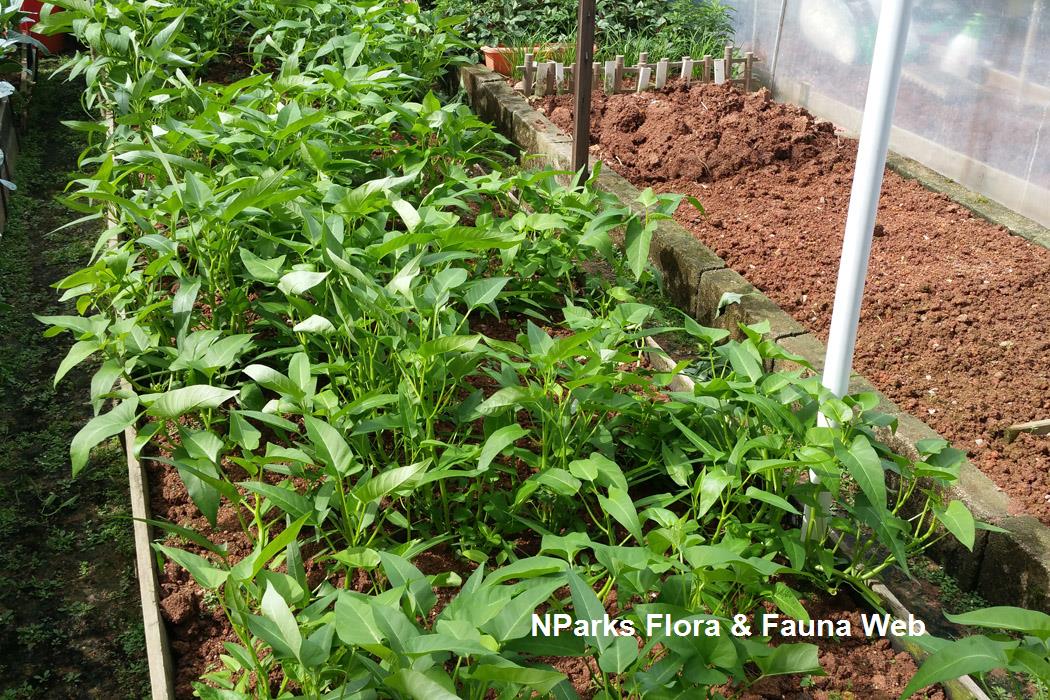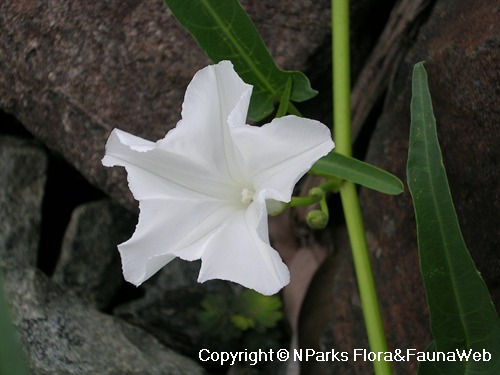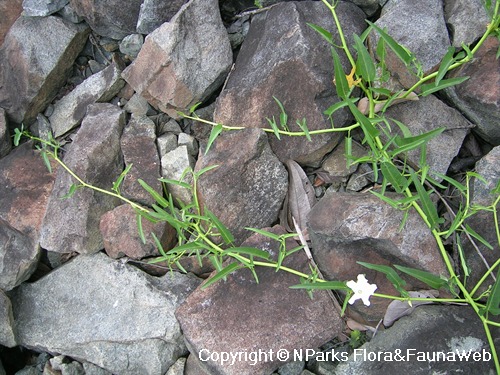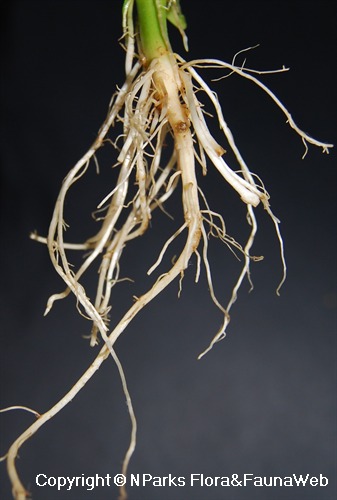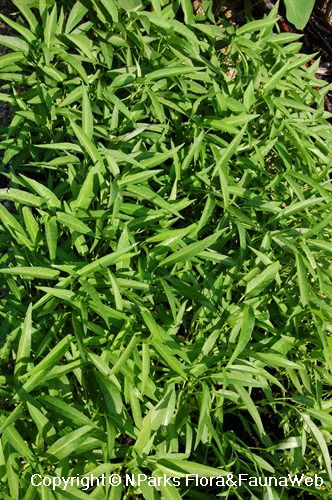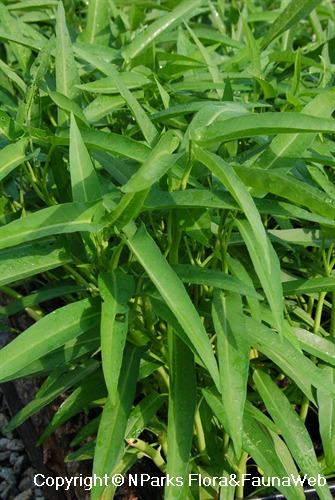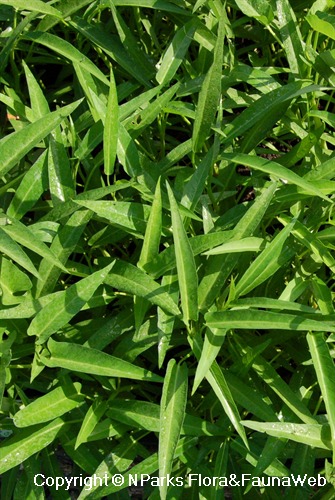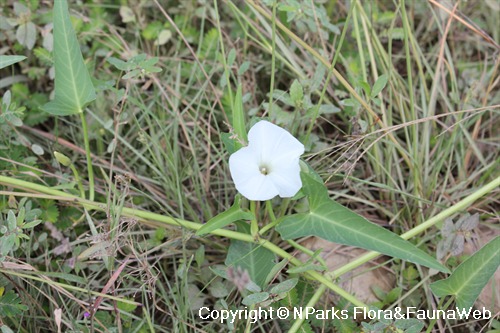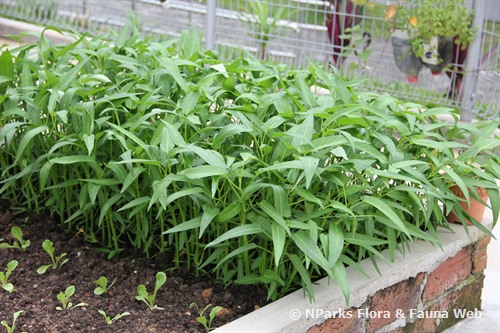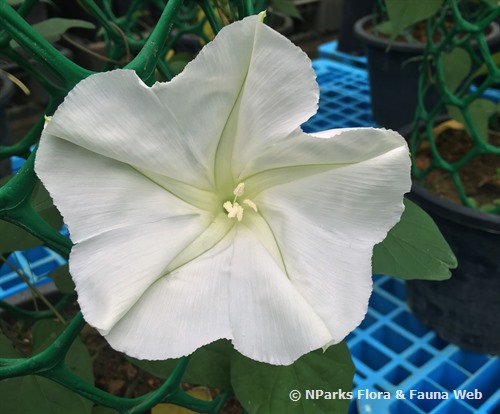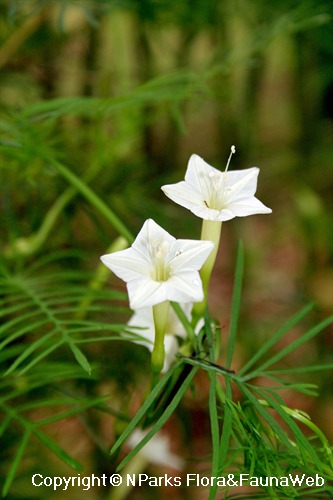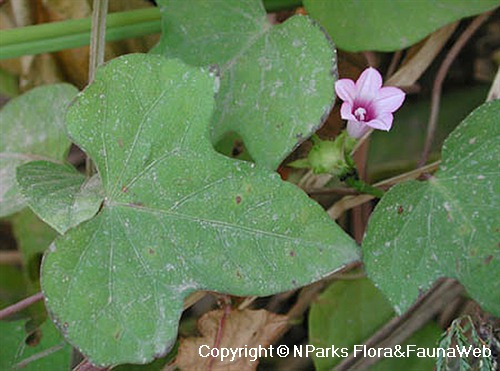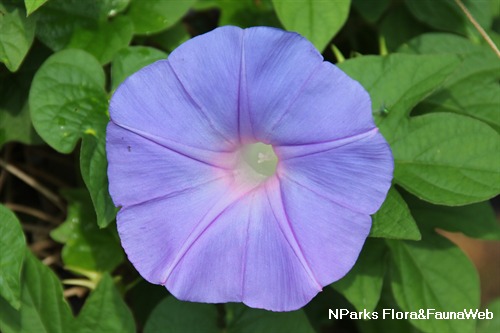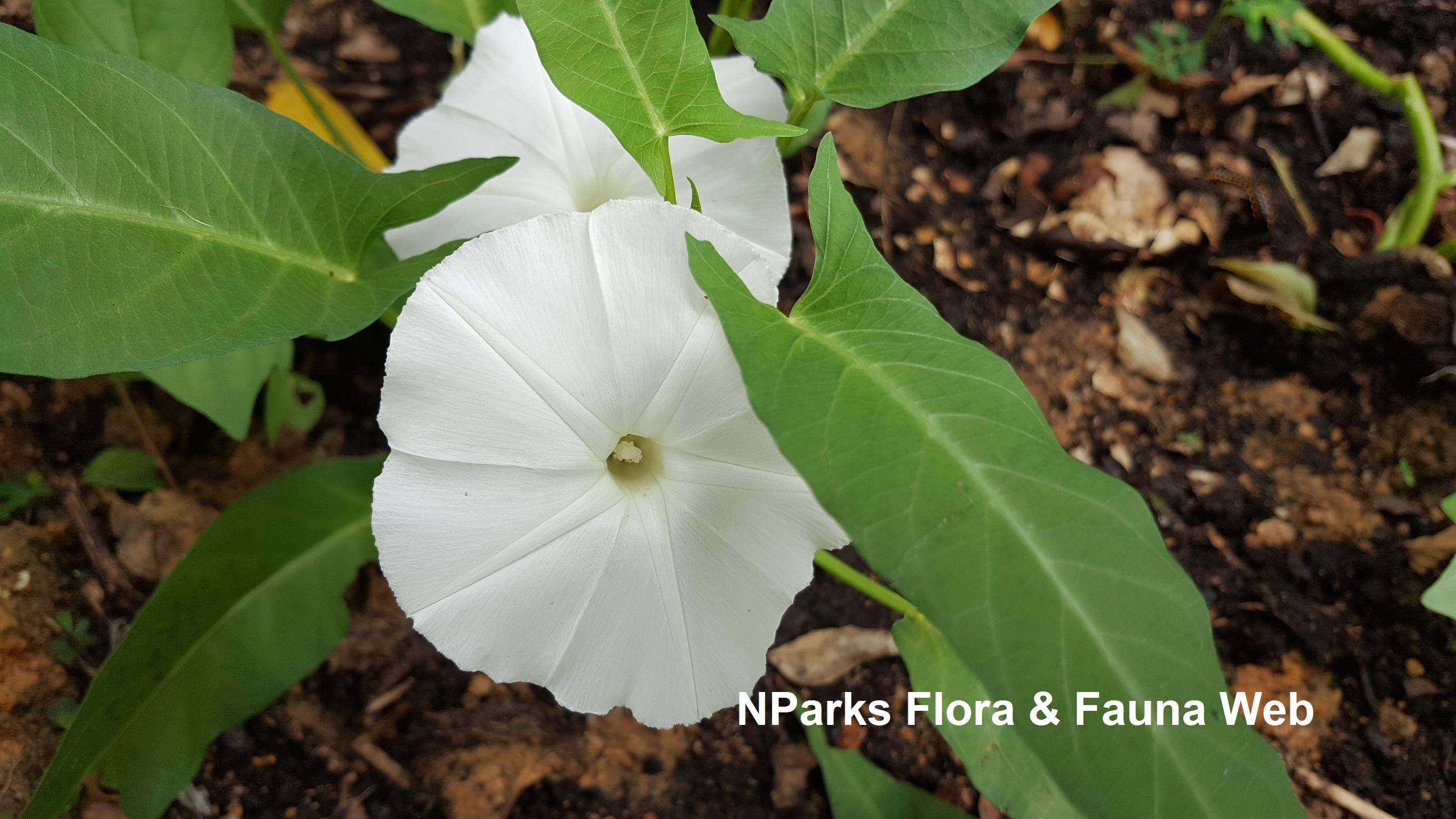
Back
Ipomoea aquatica Forssk.
| Family Name: | Convolvulaceae |
| Synonyms: | Ipomoea reptans |
| Common Name: | Kangkong, Kang Kong, Swamp Cabbage, Swamp Morning-glory, Water Morning Glory, Water Spinach, Chinese Water-spinach, Water Bindweed, Water Convolvulus, 蕹菜, 空心菜 |
Name
Classifications and Characteristics
| Plant Division | Angiosperms (Flowering Seed Plants) (Dicotyledon) |
|---|---|
| Plant Growth Form | Creeper, Herbaceous Plant |
| Lifespan (in Singapore) | Perennial |
| Mode of Nutrition | Autotrophic |
| Maximum Height | 21 m |
Biogeography
| Native Distribution | China |
|---|---|
| Native Habitat | Terrestrial (Riverine) |
| Preferred Climate Zone | Sub-Tropical / Monsoonal |
Description and Ethnobotany
| Growth Form | Semi-aquatic, perennial herbaceous creeping vine growing up to 3 m long. |
|---|---|
| Foliage | Leaves smooth and shaped like an arrowhead. Leaf blade is approximately 5 - 15 cm long and 2 - 6 cm wide, while the petiole is about 3 - 14 cm long. Leaves simple and alternate. In water, leaves are held above water. |
| Stems | Hollow, containing a milky sap. |
| Flowers | Funnel-shaped, bisexual flowers (5 cm wide, 4 – 10 cm long) occur either singly or in small clusters near the leaf axils (area between the petiole and stem). Flowers may be white or pink to light purple. |
| Fruit | Round or oval-shaped capsule (1 cm in diameter) holding 1 - 4 seeds. Capsule becomes woody and brown at maturity. Seeds vary in color from gray, brown to black. Each plant produces about 175 - 245 seeds. |
| Others - Plant Morphology | Caution: The plants accumulate heavy metals when planted in polluted water, posing a risk to people and animals that consume them. |
| Habitat | Occurs in swamps, lakes, stream banks, and bogs. Considered an invasive weed in the USA and the Philippines because it rapidly covers the surface of bodies of water, reducing light availability for other aquatic life, such as phytoplankton. |
| Cultivation | Grows best in warm, humid environments. Tolerant of waterlogged soils. Propagate by seed or stem cutting. Stems easily root at the nodes. |
| Etymology | The species epithet “aquatica” means water and refers to the plant’s ability to grow in water. |
| Ethnobotanical Uses | Edible Plant Parts : Edible Leaves, Edible Stems Food (Fruit or Vegetable): Widely consumed in South East Asia as a leafy vegetable and is especially popular in Vietnam. Stems and leaves are often stir-fried. However, the leaves may also be eaten raw, such as in salads. The leaves are rich in iron. Medicinal: An aqueous leaf extract helped to reduce blood sugar in diabetic patients. The plant is also used in traditional medicine. Others: The plant is also fed to pigs and cattle. |
Landscaping Features
| Thematic Landscaping | Economic Garden |
|---|
Fauna, Pollination and Dispersal
| Pollination Method(s) | Abiotic (Self-Pollinated), Biotic (Fauna) (Insects (Bee), Insects (Butterfly, Moth)) |
|---|
Plant Care and Propagation
| Light Preference | Full Sun |
|---|---|
| Water Preference | Lots of Water |
| Plant Growth Rate | Fast |
| Rootzone Tolerance | Waterlogged Soils (Drains Site) |
| Maintenance Requirements | Low |
| Propagation Method | Seed, Stem Cutting |
| Seed / Spore Germination Duration | 3 days |
Foliar
| Mature Foliage Colour(s) | Green |
|---|---|
| Mature Foliage Texture(s) | Smooth |
| Foliar Type | Simple / Unifoliate |
| Foliar Arrangement Along Stem | Alternate |
| Foliar Shape(s) | Non-Palm Foliage (Linear, Sagittate) |
| Foliar Venation | Pinnate / Net |
| Foliar Margin | Entire |
| Foliar Apex - Tip | Acute |
| Foliar Base | Truncate / Square, Sagittate, Hastate |
| Typical Foliar Area | Notophyll ( 20.25cm2 - 45 cm2 ) |
Non - Foliar and Storage
| Stem Type & Modification | Hollow |
|---|---|
| Root Type | Underground (Fibrous Root) |
Floral (Angiosperm)
| Flower & Plant Sexuality | Bisexual Flowers |
| Flower Colour(s) | White |
|---|---|
| Flower Symmetry | Radial |
| Individual Flower Shape | Funnelform / Funnel-shaped |
| Flower Size - Remarks | 5 cm wide, 4 – 10 cm long |
| Inflorescence Type | Cyme |
| Ovary Position | Superior / Hypogynous |
| Flowering Opening Time | Daytime |
Fruit, Seed and Spore
| Mature Fruit Colour(s) | Brown |
|---|---|
| Fruit Classification | Simple Fruit |
| Fruit Type | Dehiscent Dry Fruit , Capsule |
Image Repository
Others
| Master ID | 126 |
|---|---|
| Species ID | 1422 |
| Flora Disclaimer | The information in this website has been compiled from reliable sources, such as reference works on medicinal plants. It is not a substitute for medical advice or treatment and NParks does not purport to provide any medical advice. Readers should always consult his/her physician before using or consuming a plant for medicinal purposes. |

